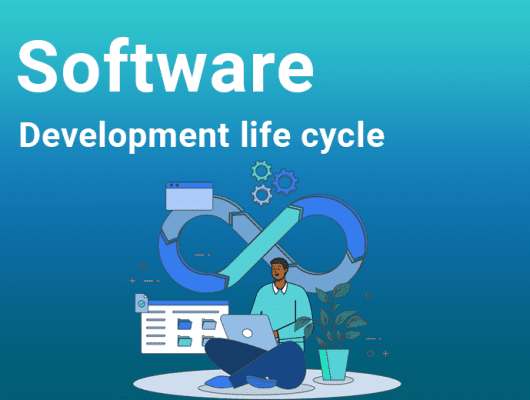
Understanding Proof of Concept (POC) in Software Development
A proof of concept is a validation procedure employed during the initial stage of the product development. It is meant to demonstrate how the suggested system, application, or product can function in the actual world. Its main goal is to assess the viability of the software idea.
But why is a POC important in software development? What steps are involved in creating a successful POC? How can a POC help make informed decisions about the project’s future?
These questions will guide you through understanding the role and benefits of POCs in software development. So, let’s lift the curtains.
Table of Contents
Importance of Understanding Proof of Concept (POC) in Software Development

Putting your idea on paper and showing why it will be successful in the market is what a software development proof of concept does. Consider it as an idea for a software business plan. It can be tempting to create a proof of concept, but there are several reasons why it’s crucial to elaborate on your idea.
Your product ideas are validated using a proof of concept. Find out
- If your idea is practical before moving on to development.
- Can you build it on your budget?
- Does the market need it?
- What would be the return on investment?
Getting early feedback from focus groups improves the idea. Too many firms waste time and money creating products they believe customers would like, only to realize later that their initial ideas were not as good as they thought. Putting Proof of concept to the test with your prospective user base will enable you to obtain early feedback on what users genuinely desire.
Most importantly, developing your idea can be streamlined, saving you countless hours and money on incorrect problem-solving. Remember that, investors won’t invest in you until they see Proof of concept.
Essential Component of POC
A successful proof of concept consists of several different components. POCs look different depending on the type of business, but it must have the essential elements such as:
- Define project: Specify the goals that the project plans to accomplish.
- Aims of the project: Write down the outcomes that you want to achieve and how you plan to measure them.
- Required resources include: List the instruments and resources required to achieve the desired results.
Step to Create Proof of Concept (POC)
The potential for approval from stakeholders and investors is increased when a document or presentation is created. Therefore, the processes listed below are used to write a proof of concept effectively.
Defining your project idea
Identifying the project that needs to be tested is the first step. With the help of your development team, come up with a list of viable solutions to the issues and difficult spots. Quite possibly, there will be a variety of approaches to resolving these challenges.
Prepare a map of the solutions, considering essential considerations such as your timetable and budget. You should also consider the competitors, namely what they provide and whether or not you can improve upon that.
You might happen to hear something that will surprise you while going through this ideation process, but you might also be shocked by something you don’t hear.
You will find that some of your speculations will be clarified at this point. In this debate, a technical expert ought to be involved, as they will be the ones to judge what is feasible and what is not possible.
Set your success criteria
After defining the project, the next step is to determine the benchmarks that will be used to evaluate whether or not the project was successful.
When working on a project for a client, it is essential to speak with them about how they define success. In that case, you should research to establish the conditions for success.
Make a list of the materials you’ll need
Create a comprehensive inventory of all the material and immaterial resources the team will require to complete the project.
Note that, material items, technology, tools, and human capital are examples of resources.
Establish a schedule
Make a proof-of-concept product plan that outlines the entire process from ideation to development. For instance, do you want to launch it completely in an instant, or will it begin small and grow from there? In the event of the latter, how fast will it scale? These specifics indicate the project’s pace.
Present POC
Stakeholders should be presented with your idea for development approval.
Give a thorough explanation of the concept’s operation, preferably with pictures and illustrations. Stress how it solves problems and satisfies the needs of the target audience.
Approval is probable if the Proof of concept satisfies the requirements for success.
Make a prototype
Make a prototype of your tool when you’ve determined the ideal problem-solution scenario.
Depending on the product type, this could be a simple drawing, a wireframe, or a mockup.
It should show the intended features, the suggested workflow, and the fundamental UI/UX.
Testing of prototypes and getting feedback from users
Constructing a prototype means presenting it to the intended audience and obtaining their input. Although the preceding phases would mainly be carried out within the organization, the purpose of this stage is to demonstrate it to potential consumers and stakeholders to determine whether or not it has the potential to be successful on the market.
During the procedure, you will become aware of the genuine benefits that your gadget offers and observe how user-friendly it is.
Use this insightful input to make the necessary adjustments to the tool. Until you have a satisfactory software product version, you can repeat the procedure as often as required.
Make a route map
When you reach the final stage of the process, you should compile all of the information you have received and record it in a roadmap.
In addition to presenting the aims and objectives clearly and concisely, it should describe the step-by-step process for producing the solution. The entire software development process should be improved; therefore, you must include all lessons learned and suggestions for improvement.
Examples of Proof of Concept
Real-world examples can be helpful in better comprehending a proof of concept. Here are a few instances of its application across different sectors.
POC for developing software
Choosing the framework or model that best fits your project could be challenging when software development has so many options.
You can choose which technology will assist your project to satisfy its success requirements using a Proof of Concept (POC).
POC in pharmaceuticals
Proof of concept is also essential in the field of pharmaceutical development. A POC might evaluate the efficacy requirements and incorporate a cost-benefit analysis to guarantee profit.
Benefits of POC
Though the majority of new product ideas fail, millions of companies come up with them. But the question is what prevents them from succeeding? According to CBInsights, the top two reasons why apps fail to launch are:
- Insufficient funding, or the incapacity to obtain funds
- Absence of demand in the market
Therefore, a proof of concept can be used to begin software development to overcome these issues.
Let’s examine all the advantages that companies might expect from a POC:
Evaluating the technical viability

The goal of developing a proof of concept is to determine the technological viability of the software design.
The development team that decides on the best technical path for product development processes and evaluating what is feasible and impractical should be involved in a proof-of-concept project.
preliminary confirmation of market demands
Defining the precise issues and pain points you hope to address with the product is a prerequisite for creating a proof of concept. This assignment aims to ensure the product isn’t removed from reality and provide end users with real value.
Recognizing the limitations of the product
In software development, a proof of concept can assist owners in comprehending the constraints, benefits, and drawbacks of their proposed product.
They will be able to learn about their options and determine the best course of action for their software development project.
Making effective financial decisions
Optimizing investor finances is essential for the introduction of a new product. With the aid of a proof of concept, companies can understand their budget needs and gain insight into their expenditure.
They can prevent a nightmarish scenario where all the funds they have obtained are used to develop a complete solution that the intended market ultimately deems ineffective.
Quickening the publication
Developing a proof of concept lays out a strategy for producing your novel solution. You can use the procedure to confirm your chosen workflow and make necessary adjustments.
Making the correct decision from the beginning helps you learn about the risks involved, avoid surprises later on, and prepare to reduce them.
Difference between Proof of concept, prototype, and MVP
The phrases proof of concept, prototype, and MVP may initially sound identical and perplexing to someone who is not experienced in software development. Although they are all engaged in the early stages of developing a new software product, they stand for three different stages of the process.
Distinction between Proof of Concept and Prototype
“What distinguishes a proof of concept from a prototype?”may be on your mind. Although these two phrases are sometimes used synonymously, they refer to two distinct stages of growth.
The first step is always Proof of concept. Consider this a fully developed idea you have written down in a Word document. Should you possess the necessary documentation that validates your belief that your concept is both rational and essential, you can then proceed to the next phase: creating a prototype.
A prototype is the initial, most basic version of your software concept. It transforms the words from the Proof of concept into a physical product. Wireframes for software are an excellent kind of prototype. Its primary goal is usability, not Proof of concept.
For instance, if your Proof of concept for the software describes an idea for an application for wedding planning, your prototype might be a program demo that enables you to navigate through the essential screens of that application. You may get a better idea of what the final product will look and feel like from the prototype.
Prototype Vs. MVP
The next stage after having a prototype is to develop a Minimal Viable Product (MVP). An MVP is the most basic and condensed form of your software concept, with all the capabilities needed for real-world applications to be available to the broader public.
Final Crux
Before receiving funding and moving forward with development, software development proof of concept involves confirming the initial idea of the product. This early assessment is essential to guarantee the creation of a technologically competent product.
Remember that, it is necessary to recognize the risks and expectations your development team will encounter over the software development life cycle.
FAQ
What does a POC checklist entail?
A Proof of Concept (POC) is crucial for implementing policies and introducing new technology. It is possible to evaluate a technology’s viability and determine the most effective way to adopt and develop long-term policy around it through a well-conducted proof of concept (POC).
Who offers concept proof?
Companies usually develop a proof of concept before bringing their ideas to the attention of possible investors. Employees or team leaders in a business may also produce Proof of concept documents to present a new product idea to management.




